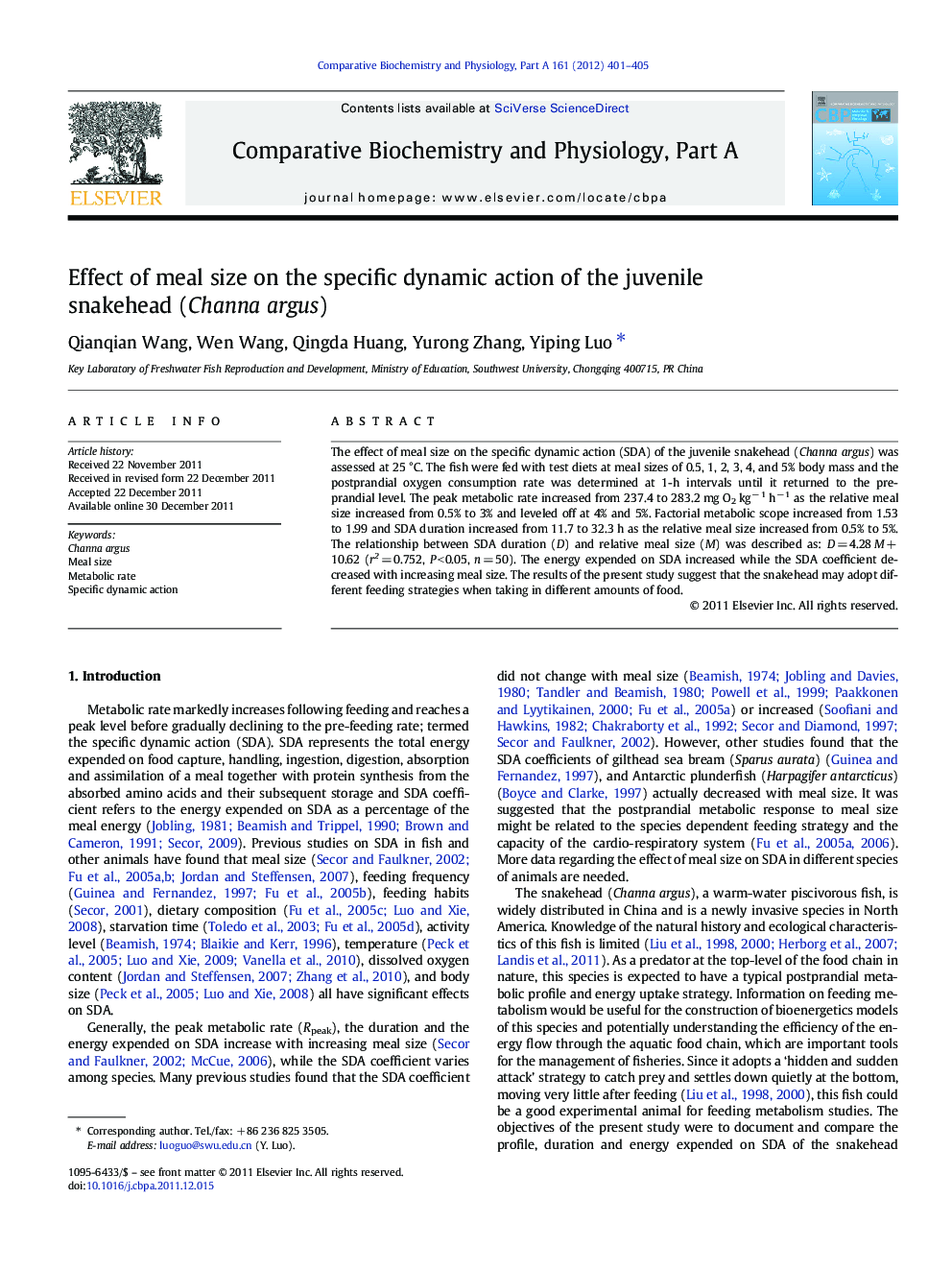| Article ID | Journal | Published Year | Pages | File Type |
|---|---|---|---|---|
| 1972292 | Comparative Biochemistry and Physiology Part A: Molecular & Integrative Physiology | 2012 | 5 Pages |
The effect of meal size on the specific dynamic action (SDA) of the juvenile snakehead (Channa argus) was assessed at 25 °C. The fish were fed with test diets at meal sizes of 0.5, 1, 2, 3, 4, and 5% body mass and the postprandial oxygen consumption rate was determined at 1-h intervals until it returned to the pre-prandial level. The peak metabolic rate increased from 237.4 to 283.2 mg O2 kg− 1 h− 1 as the relative meal size increased from 0.5% to 3% and leveled off at 4% and 5%. Factorial metabolic scope increased from 1.53 to 1.99 and SDA duration increased from 11.7 to 32.3 h as the relative meal size increased from 0.5% to 5%. The relationship between SDA duration (D) and relative meal size (M) was described as: D = 4.28 M + 10.62 (r2 = 0.752, P < 0.05, n = 50). The energy expended on SDA increased while the SDA coefficient decreased with increasing meal size. The results of the present study suggest that the snakehead may adopt different feeding strategies when taking in different amounts of food.
